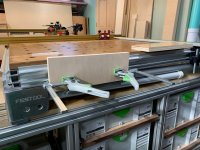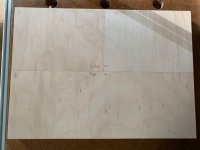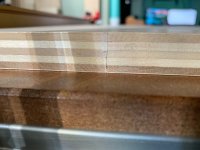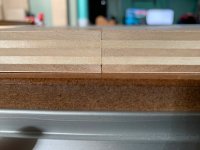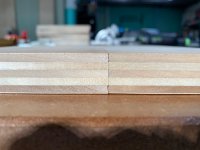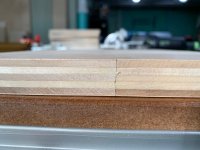Here's photo's of the boards before the test where you can see one end is near perfect and the other with wood "hang nail" is slightly out of flush.
View attachment 1View attachment 2View attachment 3
Here's the video of me using the Domino DF 500.
BEWARE: Please turn down the volume when I'm plunging so you don't blow out your eardrum ... This is straight off my GoPro Hero 7 and I'm not sure how to edit video ... what do you use for editing video's to lower volume during these spots in the video?
Festool Domino DF500 Accuracy Test
I've used a piece of paper on my screen at the base of the Domino as a visual reference guide to see how much the Domino is moving during the plunge. Do you agree with my analysis?
Plunge #1 - This plunge seems to have only a minor vertical change throughout the cut.
Plunge #2 - This plunge seems to have a minor vertical lift at the beginning with more near the end and some drop on the release.
Plunge #3 - This plunge seems to have only a minor vertical change throughout the cut.
Plunge #4 - This plunge seems to have only a minor vertical change throughout the cut.
Besides plunge #2, is the vertical movement acceptable or do I need to have even less vertical movement on # 1,3, and 4?
Besides being more aware of my need to continue holding firm after plunging, is there any technique for releasing which has least chance to move vertically and create misalignment?
Besides thinking my Domino is a cordless tool, do you have any other critique to improve for test #2?
And finally, here's the result ... even with the movement seen above, the end which was perfect before the test remains the same and the one with the hang nail of wood is still the same ... I thought it would bring it flush but perhaps is from the vertical movement ... nonetheless, it's probably fixable with a light sanding so I'd consider acceptable and will hopefully improve as I learn to hold more steady ...
View attachment 4View attachment 5View attachment 6

